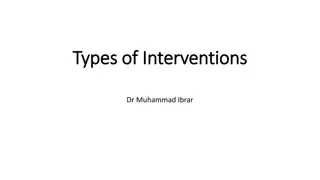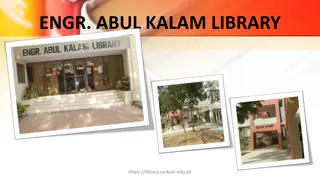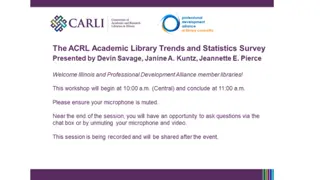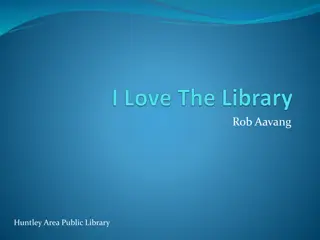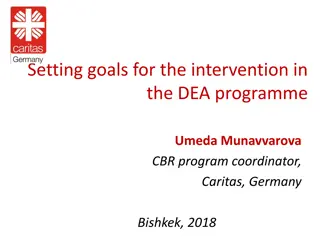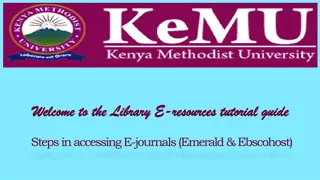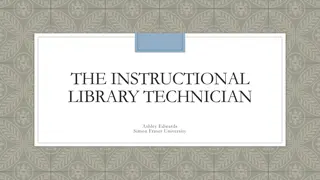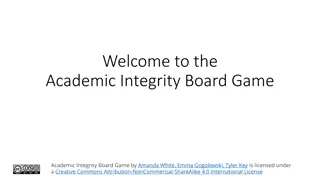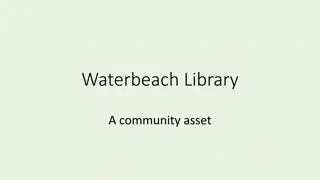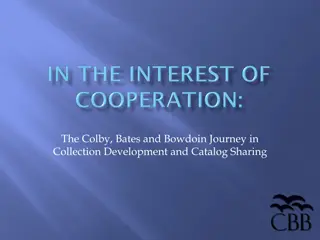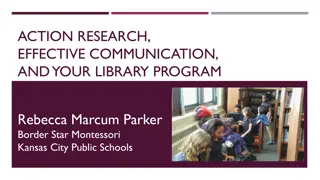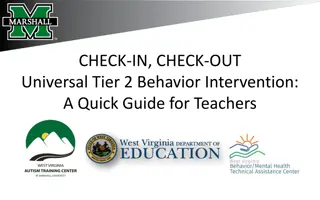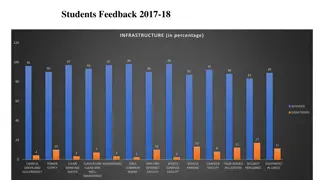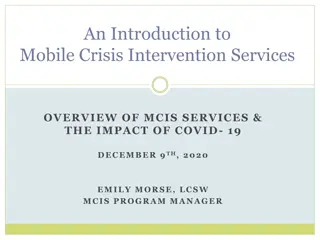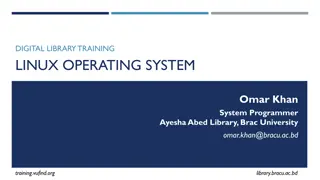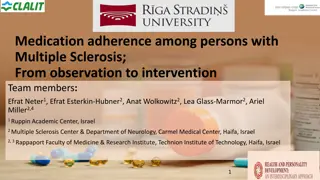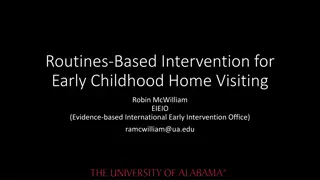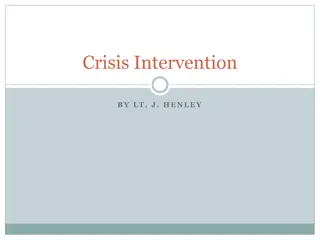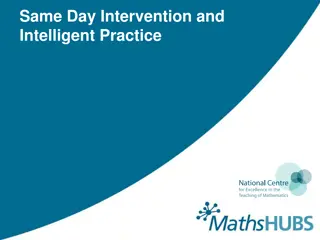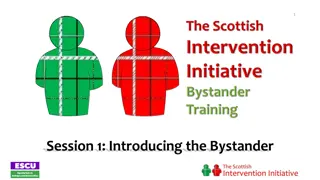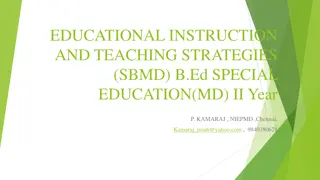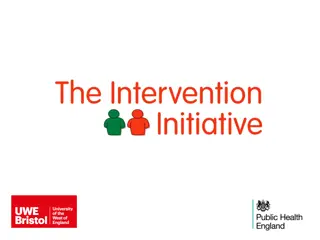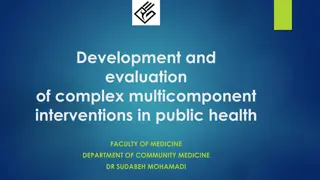Academic Intervention Library Overview
Explore the Intervention Library for academic and behavior interventions, accessed through OKMTSS. Filter interventions by grade band, intensity level, and group size. Understand grade band considerations and intervention intensity tiers. Learn about the recommended group sizes and how to choose the appropriate intensity for students' needs.
Download Presentation

Please find below an Image/Link to download the presentation.
The content on the website is provided AS IS for your information and personal use only. It may not be sold, licensed, or shared on other websites without obtaining consent from the author. Download presentation by click this link. If you encounter any issues during the download, it is possible that the publisher has removed the file from their server.
E N D
Presentation Transcript
Intervention Library
Access 2
Accessing the Intervention Library www.sde.ok.gov/okmtss Or www.sde.ok.gov > search site > OKMTSS 3
Academic and Behavior Intervention View larger version opens a new window 4
Filter Feature + Add condition Where Field contains value Title of Intervention Resource Description of the intervention Overview PK, K-3rd, 4-5th, 6-8th, 9-12th Grade Band Tier 1, Tier 2, Tier 3 Intensity Level Classwide, Small Group, Individual Group Sizing *See other slide* Skill Area Intervention protocol Lesson Plan Fidelity checklist Fidelity Check Additional links if provided Template/ Resources Linked in the protocol, but also provided here for some cards Resources/Research 5
Grade Band The grade band provided on the intervention protocol considers the following: The Oklahoma Academic Standards grade level for that skill. The protocol s task and how that relates developmentally for student s ages in expected grades. Behavior grade bands are not provided because the selection should consider the protocol s skill area and task more than the age/grade of the skill. Grade Band Code PK K-3rd 4-5th Considerations Grade Band Code 6-8th Considerations Preschool or Early Skill Early Literacy, Early Math Intermediate Literacy, Intermediate Math Early Secondary Literacy, Early Secondary Math 9-12th Secondary Literacy, Secondary Math 6
Intensity Level The Tiered recommendations are provided as guidance. It is up to the team to determine the intensity choices best for the student s needs. The National Center for Intensive Intervention defines intervention intensity with a framework of seven components: 1. Strength 2. Dosage 3. Alignment 4. Attention to transfer 5. Comprehensiveness 6. Academic/Behavioral Support 7. Individualization Tier 1 Tier 2 Tier 3 Universal support Targeted Support Intensive Support 7
Group Size The group sizes indicated are: Whole group Small group Individual It is up to the team to determine what the group size is needed to ensure effective dosage. Some protocols lend themselves to need to be done in a small group, but others are able to be done with the whole class and with individual students. When considering group size, consider the targeted skill and the students that can/need to participate in the intervention. 8
Skill Areas Behavior Areas Disruptive Behavior Social Skills Attention/Engagement Executive Function Self-Regulation Compliance Literacy Areas Educator Tool Comprehension Fluency Phonemic Awareness Phonics Vocabulary Spelling Written Expression Math Areas Algebra and Algebraic Thinking Computation Fluency Early Numeracy Geometry Measurement Numbers and Operations Data 9
Lesson Plan The protocol contains: Skill support- the target skill the protocol is designed to target. Rationale- the support for this protocol s actions to target the skill defined. Materials- anything needed for the intervention. Intervention implementation steps- protocol steps in order. Error correction procedures- how to correct the student s errors. Data collection- data needed to determine if the protocol is effective. Modifying intensity- some suggestion for intensity adjustments 10
Fidelity Check The fidelity check supports calculation of the attention to the protocol: Instructional methods Intervention implementation Student engagement Scoring/Data collection The team can then use the fidelity score to support additional next steps. It is up to the team to determine if cusp scores are valid and reliable or if the intervention will need adjustment. 11
District Usage This tool is available for anyone to use at anytime. However, districts can streamline their decision rules with this tool to support them. The district could select a series of 3-5 protocols for each skill area and determine the process for the usage of those protocols. For example, the LEA would determine which skills would be used intentionally at Tier 1 for any Tier 1+ needs to differentiate for students. Then, they would determine which series of interventions are in the targeted or Tier 2 set. Intensity determinations will be based on the student need and the team s determination. If a student needs a more intense intervention, then they will move to the Tier 3 set. Skill Area Tier 1 Tier 2 Tier 3 1. Explicit Instruction 2. Text-to-Self 3. Graphic Organizers 1. Repeated Practice 2. Accordion Foldable 3. Activating Prior Knowledge 1. Think aloud 2. Graphic Organizers- Student Comprehension 12
Site Usage Perhaps an LEA has multiple sites that need different levels of support. The district may pull together a list of what resources are in each Tier, but sites may need to adjust based on their data. This determination must be in alignment with the district, as a student moves from school to school it may be important to note that areas were adjusted. Usage Skill Area Tier 1 Tier 2 Tier 3 1. Explicit Instruction 2. Text-to-Self 3. Graphic Organizers 1. Explicit Instruction 2. Activating Prior Knowledge 3. Text-To-Self 1. Repeated Practice 2. Accordion Foldable 3. Activating Prior Knowledge 1. Repeated Practice 2. Accordion Foldable 3. Graphic Organizers 1. Think aloud 2. Graphic Organizers- Student 1. Think aloud 2. Graphic Organizers- Student District Plan Comprehension Site Plan Comprehension 13
Educator Usage If an LEA or site has not made procedures on how to use these protocols, an educator can still use these to support the following: Tier 1, class-wide instructional practice Tier 1, small group instructional practice Literacy and math center instructional methods Tier 2 and 3, intervention practice with consideration of district/site requirements for intervention provision 14
Frequently Asked Questions The list is so long, our teachers will get overwhelmed. How can we use this tool when our teachers will have a hard time selecting the intervention? The filter tool helps to narrow the list to the targeted grade and skill. The site and LEA should consider determining the specific Tiered placements for the protocols the team wishes to use. What level of training is required for these protocols? Some protocols can be taught to an educator through reading the steps, watching the linked videos (when possible), and using the resources (linked where possible). However, others may require more specialized training. 15


